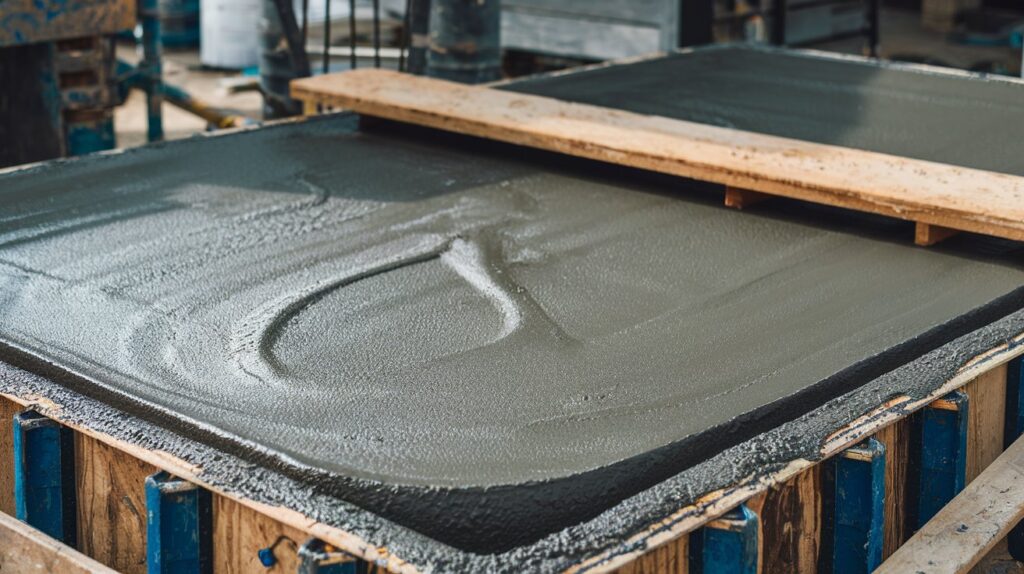When you’re working with concrete, timing is everything. I’ve spent years in construction, and I can tell you that knowing when your concrete will set makes the difference between a smooth project and a costly mess.
You’re probably here because you need to know exactly how long to wait before you can walk on that new driveway or remove those forms from your foundation. Concrete timing can be confusing, especially when you’re hearing different advice from everyone.
In this article, I’ll break down the real timeline for concrete setting and curing. We’ll cover why these two processes are different, what factors speed up or slow down your concrete.
You can trust this information because it comes from real-world experience, not just textbook theory. By the end, you’ll know exactly what to expect from your concrete pour.
What Is Concrete Setting And Curing?
Difference Between Setting And Curing
Here’s what most people get wrong about concrete, they think it’s done when it stops being wet.
Setting is when your concrete gets hard enough to touch. Curing is when it gets strong enough to last decades.
| Setting | Curing |
| Takes 24-48 hours | Takes 28 days |
| Concrete becomes firm | Concrete reaches full strength |
| Surface hardens | Chemical process continues deep inside |
| You can walk on it | Ready for heavy loads |
| Initial hardening only | Complete strength development |
Think of it like baking a cake. Setting is when the outside looks done. Curing is when the inside actually finishes cooking. I’ve seen too many people rush this process. They think because the surface feels solid, they can pile on the weight.
Your concrete might feel rock-solid after two days. But it’s only at about 50% of its final strength. The real magic happens over the next four weeks.
During curing, water and cement keep reacting deep inside. This makes your concrete stronger every single day. Skip this waiting period? You’ll end up with weak, cracked concrete that won’t last.
The bottom line: setting gets you started, but curing gets you finished.
What Is Curing?
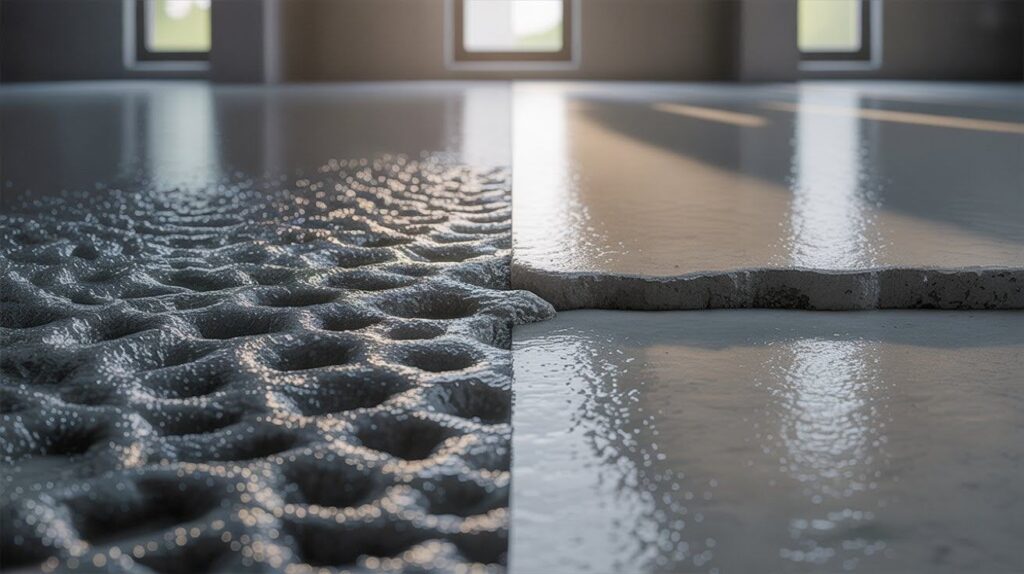
Curing is the slow chemical process that makes your concrete reach its maximum strength over 28 days.
Most homeowners think concrete is done once it hardens. That’s only the beginning. Curing is where the real strength comes from.
When I mix concrete, water and cement start a chemical reaction called hydration. This reaction doesn’t stop after your concrete sets. It keeps going for weeks.
Think about it this way. You’ve got millions of tiny cement particles in your mix. Each one needs time to fully bond with water molecules. This bonding creates the rock-hard strength you need.
Here’s what happens during curing:
- Day 1: Your concrete reaches 16% of full strength
- Day 7: It hits about 65% strength
- Day 28: Finally reaches 99% of maximum strength
Your concrete needs moisture to cure properly. No moisture means the chemical reaction stops. A stopped reaction means weak concrete.
I’ve seen people spray their driveways with water for weeks. Smart move. Others cover their concrete with plastic sheeting to trap moisture. Even smarter.
The temperature matters too. Hot weather speeds up curing but can make concrete weaker. Cold weather slows everything down.
What Makes Concrete Harden?
Hydration drives the crystal-forming reaction that hardens cement, and different cement types set at varying speeds depending on their chemistry.
The Role Of Hydration In Hardening
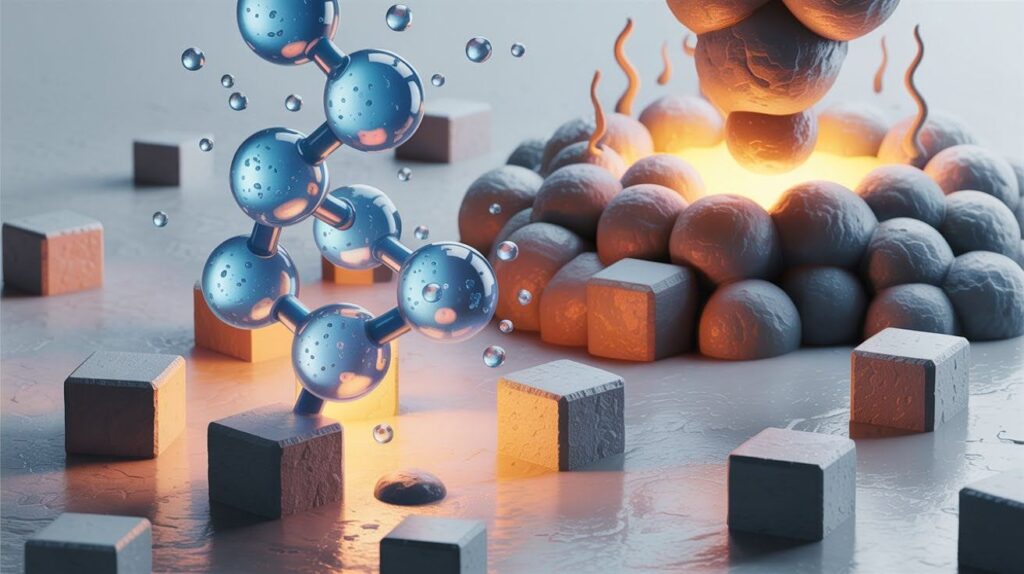
When I add water to cement, something amazing happens at the microscopic level. It’s not just drying out.
Here’s how it works. Cement contains four main compounds. When water hits these compounds, they start forming crystals. These crystals grow and interlock with each other.
Think of it like building with tiny LEGO blocks. Each crystal connects to others around it. After millions of connections, you get solid concrete.
The process generates heat too. Ever touched fresh concrete? It feels warm. That’s the hydration reaction working. The bigger your pour, the hotter it gets.
This reaction needs water to continue. Run out of water, and the process stops. That’s why keeping concrete moist is so critical during curing.
Types Of Cement And Their Setting Rates
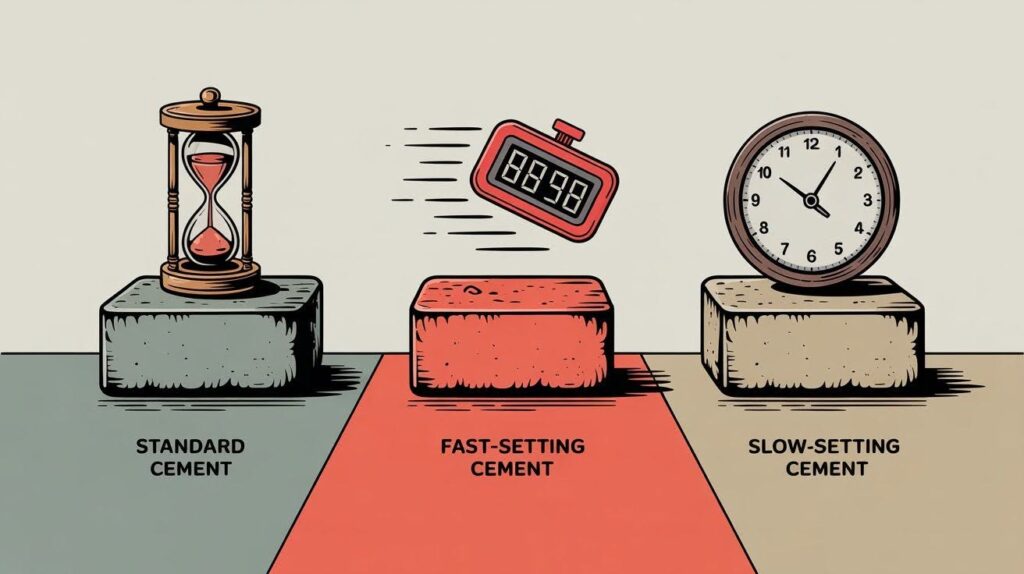
Different cement types set at completely different speeds depending on their chemical makeup.
I work with several cement types. Each one has its own personality and timeline.
Type I cement is your standard concrete. It sets in about 2-4 hours and reaches initial hardness in 24 hours. This is what most homeowners use for driveways and walkways.
Type III cement is the speed demon. It sets in 1-3 hours and gets hard fast. I use this when I need to get traffic back on the road quickly.
But here’s the trade-off. Fast-setting cement generates more heat. More heat can cause cracking in thick pours.
Type II cement sets slower than Type I. It takes 3-6 hours to set. I choose this for large pours where heat buildup could be a problem.
Type IV cement is the slowest. It can take 6-10 hours to set. This one’s for massive projects like dams where heat control is everything.
Quick-set concrete from the hardware store sets in 20-40 minutes. Perfect for fence posts, but terrible for anything bigger than a small repair.
The cement type you choose changes your entire timeline. Pick wrong, and you’ll either be rushing or waiting forever.
How Long Does Concrete Take To Set Initially?

Concrete typically takes 2 – 4 hours for its initial set, but you should wait at least 24 hours before walking on it.
Average Initial Set Time
Most concrete takes 2 to 4 hours for initial set, but you’ll need to wait 24 hours before it’s ready for light foot traffic.
I get this question every single day on job sites. Homeowners want to know exactly when they can step on their new concrete.
Here’s the timeline I follow.
The initial set happens when the concrete stops being workable. You can’t smooth it anymore. The surface feels firm when you press it lightly. This usually takes 2 to 4 hours in normal conditions.
But don’t confuse the initial set with being ready to use. Big difference.
After the initial set, concrete keeps hardening for hours. I tell my clients to wait a full 24 hours before walking on it. Even then, I’m talking about careful steps, not heavy boots.
Here’s what I’ve learned over the years.
Hot summer days speed things up. Your concrete might set in 1 to 2 hours. Cold winter days slow everything down. I’ve seen concrete take 6 to 8 hours to set when temperatures drop below 50°F.
Humidity plays tricks, too. Dry air makes the surface set faster than the inside. Humid air keeps everything workable longer.
Factors Affecting Setting Time
Temperature, humidity, cement type, and mix design all change how fast your concrete sets.
Temperature is the biggest game changer.
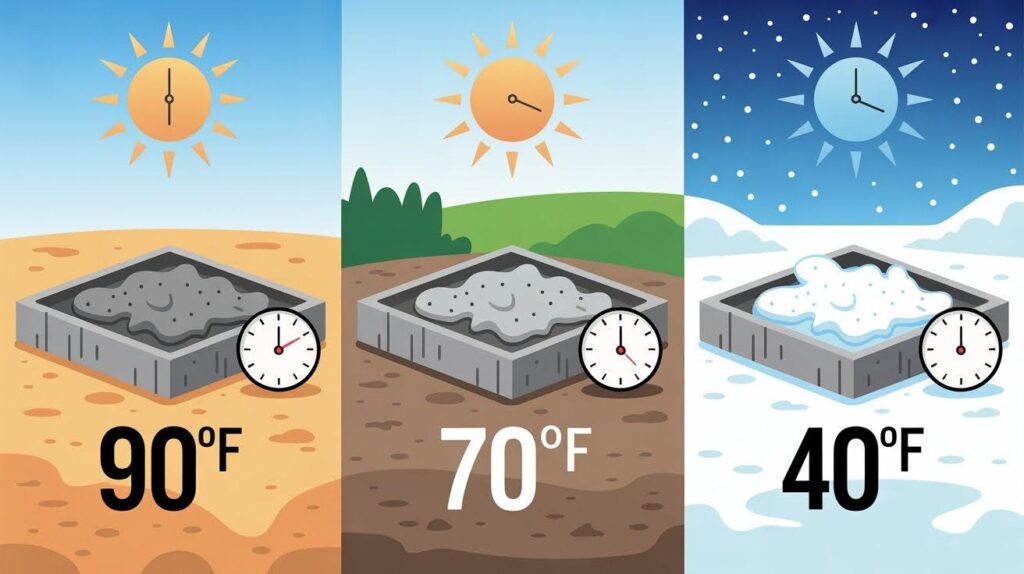
For every 20°F increase in temperature, your setting time cuts in half. Concrete at 70°F sets in 4 hours. Same concrete at 90°F sets in 2 hours.
Cold weather does the opposite. Below 40°F, setting can take 8 hours or more. Below 32°F, water starts freezing instead of hydrating. That spells trouble.
Water content matters more than you think.

Too much water makes concrete weak, but it also makes it set slower. I see DIY projects with soupy concrete that takes forever to firm up.
Too little water causes the opposite problem. The concrete sets too fast to work with properly.
Wind and humidity change the game.

Hot, dry wind pulls moisture from the surface. This creates a hard crust while the inside stays soft. Not good.
High humidity keeps concrete workable longer. Sometimes that’s helpful. Sometimes it’s frustrating when you need to get home.
Your cement type controls the base timeline.

Type I cement gives you about 4 hours. Type III cement gives you 2 hours. Quick-set mixes give you 30 minutes to work.
The aggregate size affects things too. Fine sand mixes set faster than mixes with large gravel.
How Long Does Concrete Take To Cure Completely?
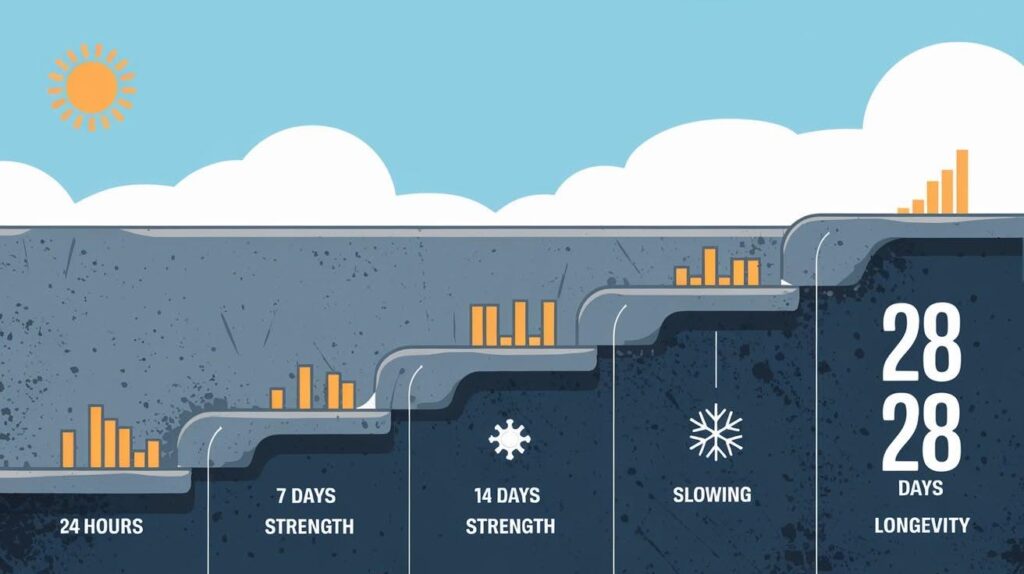
Concrete reaches 99% of its strength in 28 days, but with proper moisture, it continues gaining strength for years.
Standard Curing Period
The industry standard for complete concrete curing is 28 days, when your concrete reaches 99% of its maximum strength.
I know 28 days sounds like forever. But this timeline exists for good reason.
Your concrete gains strength on a predictable schedule. After 7 days, it reaches about 65% of full strength. After 14 days, you’re looking at 85% strength.
By day 28, concrete hits 99% of its design strength. This is why engineers base all their calculations on 28-day strength tests.
Here’s what this means for you.
Light foot traffic? Safe after 24 hours. Driving your car on it? Wait at least 7 days. Heavy equipment or permanent loads? Give it the full 28 days.
I’ve tested concrete samples at different ages. The strength gains are real and measurable. Rush the process, and you risk cracks, settling, or complete failure.
Weather affects curing time, too. Hot weather speeds things up slightly. Cold weather slows everything down. Below 50°F, curing practically stops.
The bottom line is simple. 28 days gives you concrete that will last decades. Cut corners here, and you’ll pay for it later with repairs.
Concrete Will Continue Curing For Years
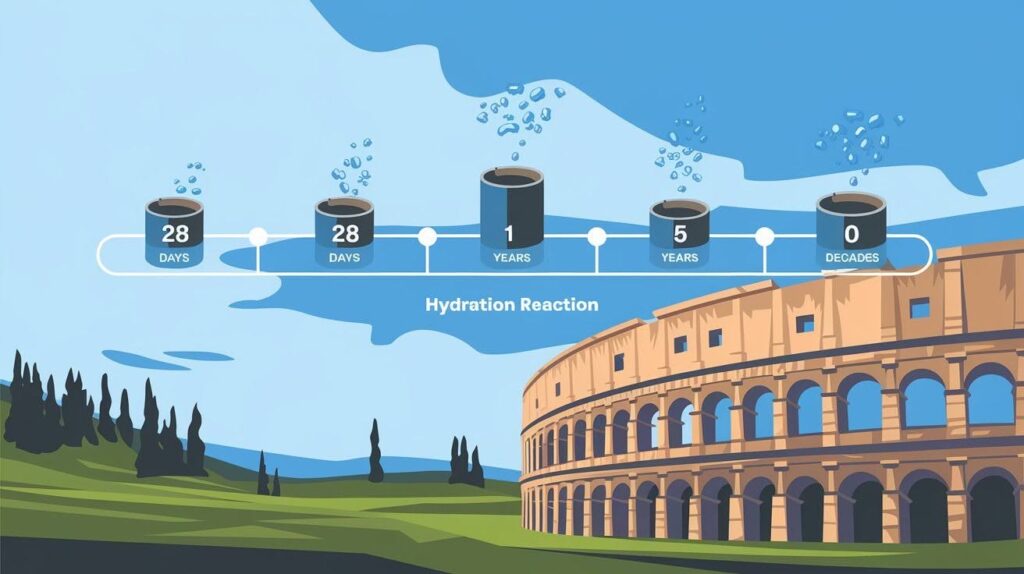
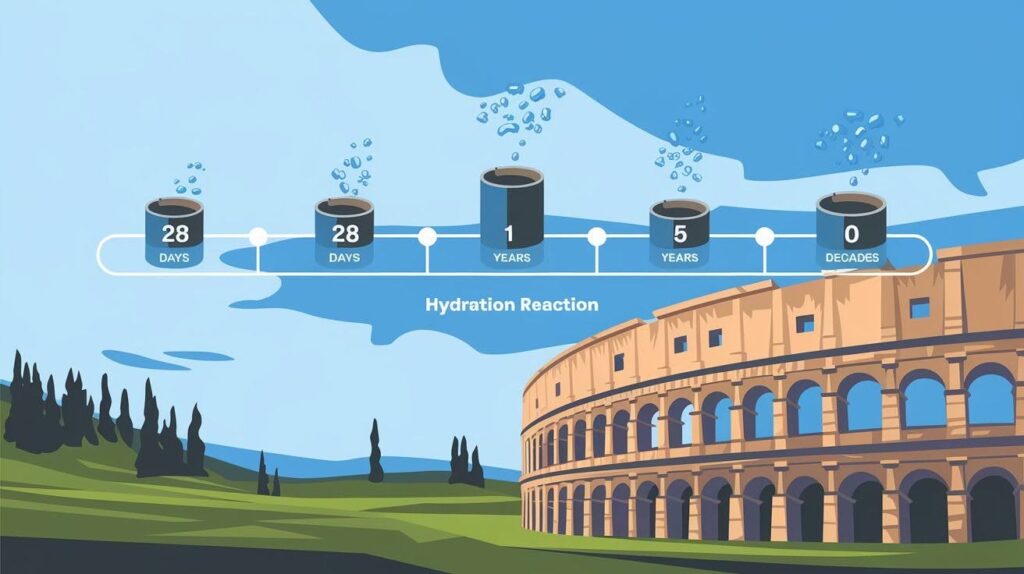
Concrete keeps getting stronger for years after the initial 28-day period, though the gains become much smaller.
This surprised me when I first learned it. Concrete isn’t finished after 28 days. It just reaches what we call “design strength.”
The hydration reaction never completely stops.
As long as moisture exists inside your concrete, those cement particles keep bonding. The process just slows way down after the first month.
At one year, concrete is about 10% stronger than at 28 days. At five years, it might be 15% stronger. These gains continue for decades.
I’ve seen 50-year-old concrete that’s significantly stronger than when it was poured. Ancient Roman concrete is still getting stronger after 2,000 years.
But here’s the catch.
This long-term curing only happens if moisture stays in the concrete. Dry concrete stops curing. That’s why keeping concrete damp during the first few weeks matters so much.
The practical takeaway? Your concrete gets better with age, not worse. As long as you protect it from freeze-thaw cycles and chemical damage, it will outlast you.
Most structural problems happen because of poor initial curing, not because concrete gets weaker over time.
Understanding Mixing And Fast-Setting Concrete
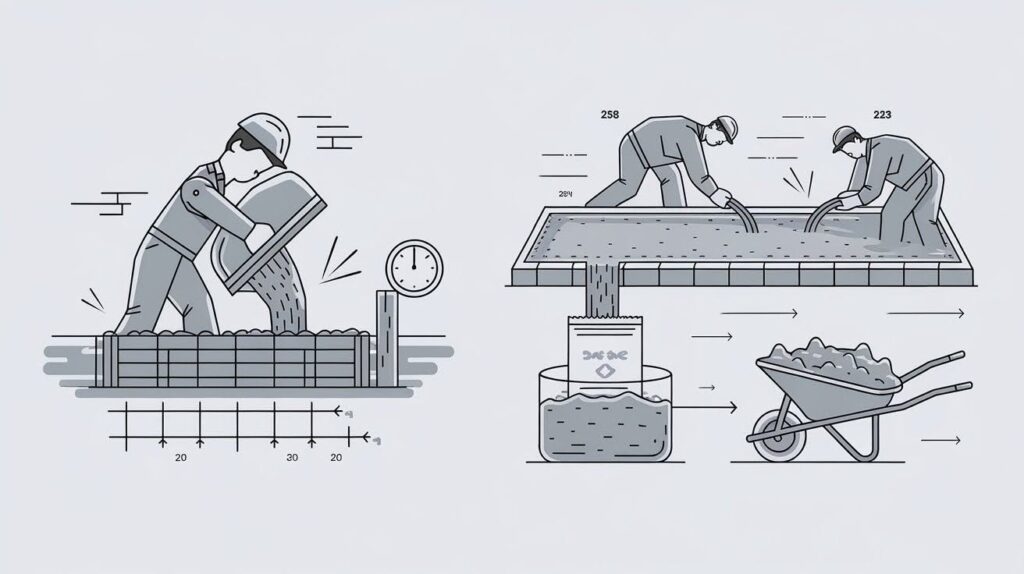
Fast-setting concrete hardens in 20 – 40 minutes using special additives, making it ideal for small, quick repairs but less suitable for large or structural projects.
What Is Fast-Setting Concrete?
Fast-setting concrete is specially formulated to harden in 20 to 40 minutes instead of the usual 2 to 4 hours.
I remember my first time using fast-setting concrete. The bag said 20 minutes, and I thought it was marketing hype.
It wasn’t.
Fast-setting concrete uses different chemical additives than regular concrete. These additives speed up the hydration reaction dramatically. What normally takes hours happens in minutes.
You’ll find this stuff in bags at your local hardware store. Brands like Quikrete and Sakrete make popular versions. Just add water, mix, and pour.
But here’s what catches people off guard.
Once you add water, the clock starts ticking. You get about 15 minutes to mix and place it. After that, it starts getting stiff. By 40 minutes, it’s rock hard.
I’ve seen DIY enthusiasts panic when their concrete starts setting in the wheelbarrow. They’re still trying to smooth it when it’s already hardening.
The chemistry is different too. Regular concrete relies on calcium silicate hydration. Fast-setting concrete uses calcium aluminate compounds that react much faster with water.
When To Use Fast-Setting Concrete
Fast-setting concrete works best for small repairs, fence posts, and projects where you need quick results.
Fence posts are perfect for this stuff.
I use fast-setting concrete whenever I’m setting fence posts. Dig the hole, drop in the post, pour the concrete, add water, and walk away. No mixing required.
Mailbox posts work great too. So do basketball hoops and small sign posts. Anything that needs to be solid quickly but doesn’t carry major structural loads.
Emergency repairs love fast-setting concrete.
Got a hole in your sidewalk that needs fixing today? Fast-setting concrete gets you back to normal in an hour. Regular concrete would take 24 hours before you could walk on it.
Small concrete patches work well. Cracks in steps, holes in garage floors, or damaged curbs all benefit from quick setting times.
But I have limits on where I use it.
Never use fast-setting concrete for large pours. The heat generated can cause serious cracking. Never use it for structural work like foundations or load-bearing walls.
The working time is too short for anything bigger than a wheelbarrow full.
Trade-offs Of Fast-Setting Mixes
Fast-setting concrete costs more, generates excess heat, and typically ends up weaker than regular concrete mixes.
The price difference is significant.
Regular concrete costs about $4 per 80-pound bag. Fast-setting concrete runs $7 to $9 for the same size bag. You’re paying double for convenience.
For small projects, the extra cost makes sense. For big projects, it gets expensive fast.
Heat generation is the biggest concern.
Fast-setting concrete produces much more heat than regular concrete. This heat can cause cracking, especially in thick sections. I’ve seen fence posts crack from the inside out because of heat buildup.
Strength takes a hit too.
Most fast-setting concretes reach about 80% to 90% of regular concrete strength. That’s fine for non-structural work. Not so great for anything that carries serious loads.
Working time creates pressure.
You get 15 minutes to work with fast-setting concrete. Make a mistake, and there’s no time to fix it. Regular concrete gives you hours to get things right.
The short working time also limits batch sizes. You can only mix what you can place in 15 minutes. Large projects become impossible.
But the convenience factor is real. When I need a fence post solid in one hour instead of 24, fast-setting concrete wins every time.
Tips
Setting and Curing Basics
- Wait 24 hours before walking on new concrete
- Keep concrete moist for 28 days to reach full strength
- Don’t confuse initial hardening with complete curing
Weather Considerations
- Hot weather cuts setting time in half
- Cold weather below 50°F slows curing significantly
- Cover concrete in windy conditions to prevent surface crusting
Cement Selection
- Use Type I cement for most home projects
- Choose Type III for quick repairs when time matters
- Avoid fast-setting cement for large pours
Proper Curing Process
- Spray concrete with water daily during the first week
- Cover with plastic sheeting to trap moisture
- Never let concrete dry out during the first 7 days
Conclusion
Understanding concrete timing saves you from costly mistakes and ensures your project lasts for decades. Setting happens in 2 to 4 hours when concrete becomes firm, but real strength comes from the 28-day curing process.
I can’t stress this enough: patience pays off with concrete. You can walk on it after 24 hours, drive on it after 7 days, but wait the full 28 days for heavy loads. Your concrete will keep getting stronger for years if you cure it properly.
Keep it moist during those first few weeks. Choose the right cement type for your project timeline. Remember that fast-setting concrete works great for small jobs, but costs more and creates heat issues.
Follow these timelines, and your concrete will outlast you. Rush the process, and you’ll be making expensive repairs sooner than you think.
Frequently Asked Questions
Can I Walk On Concrete After 12 Hours?
It’s better to wait the full 24 hours before walking on new concrete. While the surface might feel hard after 12 hours, the concrete underneath is still soft and can be damaged by foot traffic.
What Happens If It Rains On Fresh Concrete?
Light rain after 2-4 hours won’t hurt your concrete and might even help with curing. Heavy rain on fresh concrete can wash away the cement paste and weaken the surface, so cover it if possible.
Why Is My Concrete Taking So Long To Set?
Cold weather below 50°F dramatically slows concrete setting times. Too much water in the mix, high humidity, or using the wrong cement type can also cause delays in the setting process.
Can I Speed Up Concrete Curing?
You can’t safely speed up the 28-day curing process, but you can use fast-setting concrete for quick repairs. Adding accelerators to regular concrete helps with setting time but doesn’t change the curing timeline.
How Do I Know When Concrete Is Fully Cured?
Concrete reaches design strength after 28 days under proper conditions. You’ll know it’s ready when it passes the timeline and has been kept moist throughout the curing period.

